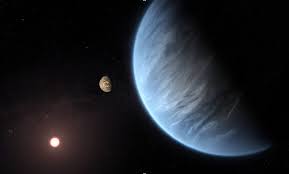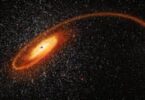Monitoring Desk
FLORIDA: Scientists have made a new discovery in which they found two exoplanets — larger than the Earth — revolving around a habitable zone of a red dwarf star, reported space.com.
The planets were discovered by Nasa’s Transiting Exoplanet Survey Satellite (TESS) as it crossed the café of their parent star TOI-2095.
The star is located around 137 light-years from our solar system.
The transit caused dips in the light from the star, and by analysing those dips, scientists revealed the presence, as well as some characteristics, of the two exoplanets.
TOI-2095 red dwarf is part of the largest family of stars in space. Though they are cooler than the sun, red dwarfs are known to experience violent outbursts of ultraviolet and X-ray radiation in their initial days.
The radiations are so strong that they could blow away the atmospheres of planets orbiting nearby.
Therefore, scientists are unable to determine if planets with a red dwarf’s habitable zone — defined as within the range of distances from a star where liquid water could be stable on a world’s surface — are actually hosting Earth-like life.
The discovery — in the paper repository arXiv last month — enabled scientists to further study into the phenomenon.
The exoplanet TOI-2095 b is 1.39 times wide and has up to 4.1 times the mass of our planet. It takes around 17.7 Earth days to orbit its axis.
The second, TOI-2095 c, is a little farther out than the other one and takes 28.2 Earth days to orbit its axis.
This has a diameter of nearly 1.33 times that of Earth and has up to 7.5 times the mass. The temperatures of the planets are estimated between 75 degrees Fahrenheit and 165 degrees Fahrenheit (24 to 74 degrees Celsius), researchers said.
The team behind the discovery, led by astronomer Felipe Murgas of the University of La Laguna in Spain, pointed out that “the relatively long orbital periods of these two planets could provide crucial data that can help shed light on the processes that shape the composition of small planets orbiting red dwarfs.”
The discovery underlines Nasa’s TESS mission’s power which was launched in 2018 to hunt exoplanets. It has so far found 330 alien worlds including more than 6,400 candidates that await follow-up study or analysis.
Astronomers now eyeing to follow up on the discovery of the two super-Earths by making precise measurements of their radial velocity.







